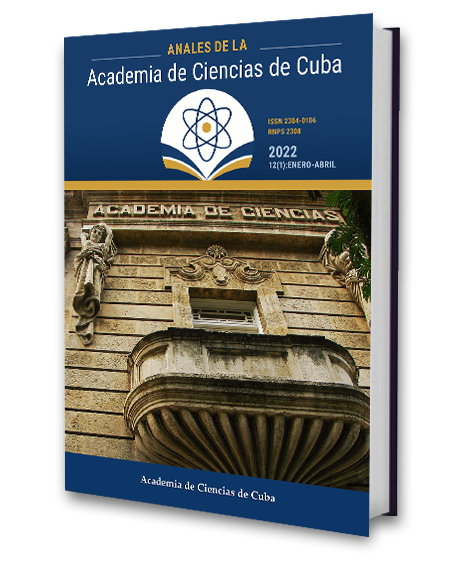Modeling and experimental validation of covalent immobilization of Trametes versicolor laccase in gold nanoparticles
Keywords:
covalent immobilization on gold nanoparticles through amide bonds, immobilized derivative functional competence, protein load for immobilization, rational design of immobilized derivatives strategy, Trametes versicolor laccaseAbstract
Introduction. Protein immobilization is one of the most used technologies to increase the enzyme operational stability and improve their usage in biotechnological applications. Usually, the synthesis of immobilized derivatives is performed by the trial and error method. Our strategy for the rational design of immobilized derivatives (RDID) allows to select the optimal conditions for their synthesis. Gold nanoparticles (AuNPs), as non-porous solid supports, represent excellent systems for protein immobilization, with successful applications in nanomedicine, biocatalysis and electronics. Methods. The objective of this work was to validate the RDID strategy for covalent immobilization of the enzyme laccase from the basidiomycete white-rot fungus Trametes versicolor on AuNPs, activated with mercaptoundecanoic acid (AuNP-MUA) and MUA-ethylenediamine (AuNP-MUAen), for the potential use of the resultant biocatalysts in bioconversion processes. Results. As a result, the laccase-AuNP-MUA immobilized derivative is better than laccase-AuNP-MUAen in predicted immobilized derivative functional competence (42,8 % vs 26,1 %, respectively). In addition, all clusters predicted for laccase binding on AuNP-MUA resulted in immobilized enzymes with accessible active sites. In contrast, the half clusters predicted for interaction of laccase with AuNP-MUAen resulted in enzymes with poorly accessible active sites. Activity prediction was confirmed by an experimental expressed enzymatic activity of 45 % in laccase-AuNP-MUA system. Experimental maximal protein load matches the theoretical value (12,7 ± 0,7 x 10-12 vs 12 x 10-12 protein mg / activated AuNP mL). The results obtained in this research suggest the possibility of using this biocatalyst on a large scale.Downloads
Published
How to Cite
Issue
Section
License
The journal Anales de la Academia de Ciencias de Cuba protects copyright, and operates with a Creative Commons License 4.0 (Creative Commons Attribution-NonCommercial License 4.0). By publishing in it, authors allow themselves to copy, reproduce, distribute, publicly communicate their work and generate derivative works, as long as the original author is cited and acknowledged. They do not allow, however, the use of the original work for commercial or lucrative purposes.
The authors authorize the publication of their writings, retaining the authorship rights, and assigning and transferring to the magazine all the rights protected by the intellectual property laws that govern in Cuba, which imply editing to disseminate the work.
Authors may establish additional agreements for the non-exclusive distribution of the version of the work published in the journal (for example, placing it in an institutional repository or publishing it in a book), with recognition of having been first published in this journal.
To learn more, see https://creativecommons.org






